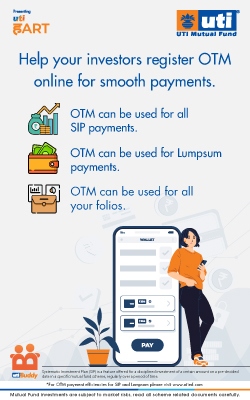Yogin Sabnis of VSK Financial Services shares four secrets for nurturing great employees.
This article is based on the work done by Ms Angie Herbers in the USA. She is a business coach who has worked with hundreds of advisors for the last 10 years. P4 is a distillation of her experiences.
The principles mentioned below are not some abstract theories but have been proved time and again to be the success formula for building great organisations by creating great employees.
Step 1: Preparation
By the Employer: These are the most changes an employer can embark upon but for P4 to be a success they are necessary.
1. The business owner himself has to go through a complete transformation of thought process. He has to let go of control and look at himself more as a coach or a guide to his employees rather than a boss.
2. He needs to share his vision with his employees. All business owners have a vision pertaining to their business goals, their revenue targets. All the thought processes, actions are geared to meet these goals. If these are shared with the employees, they would better understand your actions and would even be able to proactively help you in achieving them.
3. Focus on revenue than profits. Revenue is all about growing the company. Employees understand revenue and if their interest can be aligned to revenue increases it would be easier for them to focus on it.
4. Sacrifice personal short-term gratification. At the first sign of success it would be tempting for the business owner to pay himself a bonus or buy that flashy car. Good business owners look to build their businesses. To do that they are willing to postpone gratification.
For the Employee
1. Training: When a new employee joins he is excited about his job and wants to give his best. At such times most organisations give him a few minutes of orientation and then he is more or less on his own. Nothing is more demotivating than this. A new employee is your future asset and to convey to him that value, every organization should have a formalized training program. Not only that, for the first 3 months there must be a lot of hand holding and nurturing. Only then an employer can hope to get on with next steps of preparing the employee.
2. Empowering: the employee to take decisions. This is part of the letting go process. Initially they will be tentative, scared even but with the employer’s encouragement they will build up the confidence.
3. Encourage new ideas and methods: If they are given the desired end result and given the freedom to devise their own methods, you will be surprised what innovative processes they can come up with.
4. Support when they make mistakes: This is very crucial. If they are scared to make mistakes because the management won’t take it kindly then the entire purpose of the exercise is lost. In fact, a mistake by an employee should be a cause for the employer to introspect whether there is a lacuna in the training program or whether there is a lack of communication somewhere.
Step 2: Pay
1. Reasonable Pay: The salaries need not be high but have to be at least the average of the industry.
2. Incentives: They should obviously be linked to revenue growth and paid quarterly.
Step 3: Perks
Must have perks: Business owners should offer health insurance and employee provident fund (EPF). As advisors, two of the most important areas you stress upon your clients are health insurance and retirement planning. By offering these perks you are sending a message to your employees that you treat them on par with your clients.
Nice to have perks: Angie had made a list of 11 and said that you should offer at least six. Some of them may be difficult to implement in our culture and may not even add value. You could devise your own like providing “work from home” facility.
• Flex time
• Open Vacation
• Provided Lunch
• Bereavement time off
• Maternity leave (M&F)
• Time off for volunteer work
• Group discounts
• Paying for and paid time off for continuing education
• Paying for further educational and professional resources
• Time off for non work related education
• Sabbatical time off 5 weeks after 5 years
Step 4: Productivity
Good productivity tools are important because they enable the employee to focus on work at hand and not be frustrated by inefficient tools, which hamper work.
- Tools like laptops and high speed internet access.
- Software for financial planning, data management and CRM.
- Enroll employees for training and knowledge up gradation programs and conferences.




